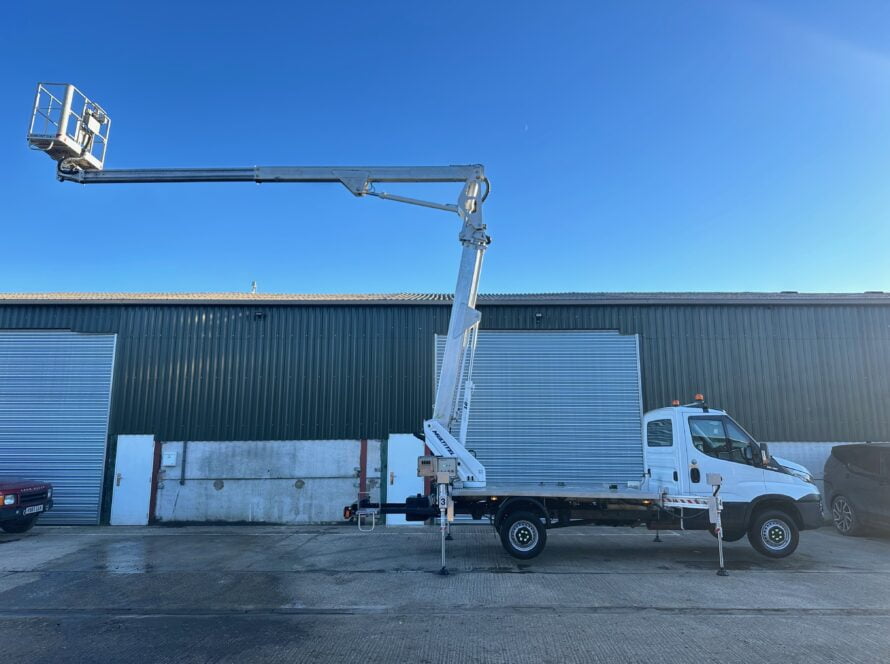Changing a museum exhibition takes skill, precision, and careful planning. Each artefact holds cultural and historical value, meaning even the slightest mistake can have major consequences. Traditional access methods, such as scaffolding and ladders, often increase the risk of accidental damage or disruption in these sensitive environments.
That’s where spider lifts make all the difference. Compact, flexible, and designed for precision work, spider lifts allow museum staff to safely install, adjust, and remove displays without compromising delicate interiors or the safety of staff and visitors. Here are five ways these machines are transforming how museums handle exhibition changes.
1. Safeguarding Delicate Floors and Interiors
Museums are often historical or protected buildings themselves, featuring original wooden, tiles or marble floors that must be protected at all costs. Heavy equipment or scaffolding can easily mark or crack these surfaces, resulting in costly repairs and unnecessary stress during installations.
Spider lifts solve this problem as they’re lightweight and feature non-marking tracks, allowing them to move smoothly across fragile flooring without leaving a trace. They can fit through narrow corridors and doorways. Spider lifts provide safe access for maintenance or installation teams while preserving priceless surroundings.
2. Enhanced Safety for Staff and Objects
Safety is essential in any museum setting. Handling valuable artefacts at height increases the risk of damage to both the exhibits and the team working on them. Unlike ladders or scaffolding platforms, spider lifts include modern safety features to keep everyone safe. They include stabilising outriggers, automatic levelling systems, secure guardrails, and harness points for added protection.
By keeping staff securely on a stable platform, spider lifts can reduce the chance of slips, falls, or sudden movement near valuable displays. This combination of security and control makes them an ideal choice for museums prioritising both staff welfare and the protection of their collections.
3. Precision Placement in Tight or Awkward Spaces
Many museum exhibits involve detailed placement, requiring exact positioning in awkward positions. Traditional access methods often make this task difficult, as ladders and scaffolding can’t easily reach awkward angles without constant repositioning.
Spider lifts are purpose-built for precision placement. Their articulated arms and telescopic reach allow operators to move smoothly in multiple directions, positioning items exactly where they’re needed without touching surrounding exhibits.
For high atriums, ceiling installations, or hanging artwork, spider lifts offer the flexibility and reach that scaffolding simply can’t match. This fine control ensures exhibition staff can work efficiently while maintaining the highest standards of care.
4. Reduced Project Time and Disruption
Museum schedules are often tight, with limited windows to change exhibitions before reopening to the public. Every hour counts, and delays in installation can affect visitor flow, revenue, and planned programming. Spider lifts help minimise downtime by cutting out lengthy assembly and dismantling times associated with scaffolding. Once delivered, they can be set up and ready to use within minutes.
This not only keeps exhibitions on schedule but also reduces disruption to other ongoing museum activities. Minimal noise and compact movement mean public areas can remain open while work takes place behind the scenes. For time-sensitive installations, a spider lift’s speed and flexibility make all the difference.
5. Versatility Indoors and Out
Many museums also have outdoor sculpture gardens, courtyards, or large atrium features that require regular maintenance or reinstallation. Spider lifts are designed to handle both environments, making them gentle enough for fragile flooring yet robust enough for outdoor use.
Whether the job involves adjusting a hanging display in a climate-controlled gallery or moving a sculpture in an external courtyard, spider lifts deliver consistent performance. They can handle uneven terrain, adapt to different surface conditions, and maintain stability across both settings. For museums that regularly host large-scale installations or outdoor events, owning or hiring a spider lift provides unmatched flexibility and reliability.
Why Museums Should Invest in Spider Lifts
All in all, investing in a spider lift is worthwhile for any museum for many reasons:
- Lightweight and non-marking tracks are ideal for use on delicate flooring.
- Tall, flexible reach means users can access awkward spaces.
- Fast set-up is ideal for museums working to tight deadlines
- Works just as effectively in indoor and outdoor spaces.
- Safer for staff than using traditional ladders and scaffolding.
Make Exhibition Changes Safer with Elite Access Repairs
When it comes to managing delicate exhibition changeovers, spider lifts are the perfect solution. They’re flexible, easy to assemble and durable, making them a worthwhile investment for any institution.
At Elite Access Repairs, we are proud to support museums and cultural institutions across the UK with high-quality spider lifts and expert servicing solutions. Every lift we supply is thoroughly inspected, tested, and maintained to the highest standards, ensuring maximum safety, reliability, and longevity.
We can guide you through the selection process, helping you find a machine that meets your exact requirements and fits seamlessly within your museum’s working environment. If you’re ready to enhance your installation process, speak to our experts today for tailored advice and discover the best access equipment for your needs. Make every exhibition change safer, smoother, and more efficient with our expert help.



